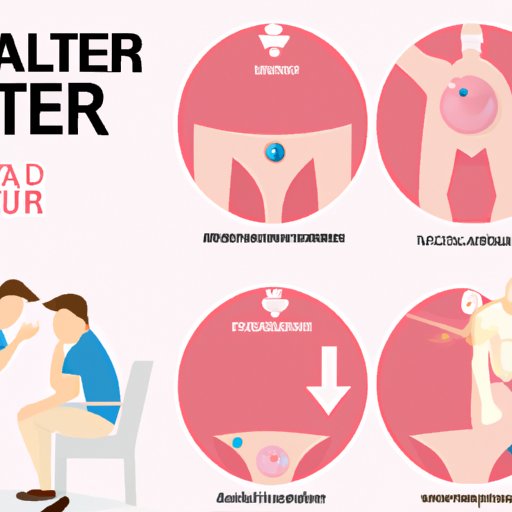Introduction
Testicular cancer is a type of cancer that occurs in the testicles, which are located in the scrotum. Although it is a rare form of cancer, it is still important to be aware of the risks, early detection, and self-examination techniques. According to the American Cancer Society, approximately 9,610 new cases of testicular cancer will be diagnosed in the United States this year, with 440 deaths. The good news is that with routine check-ups and self-examinations, testicular cancer can be detected early and successfully treated.
The Ultimate Guide to Checking for Testicular Cancer: What You Need to Know
There are two main types of testicular cancer: Seminoma and non-seminoma. Seminoma testicular cancer is known to mature slowly and responds well to radiation therapy, while non-seminoma grows rapidly and may require intensive treatment. Some known risk factors associated with testicular cancer include being between the ages of 15 and 35, a family history of testicular cancer, and having an undescended testicle at birth.
Testicular cancer is typically detected through physical examination, blood tests, and imaging tests such as ultrasounds or CT scans. These tests help identify the location and size of the tumor, as well as if the cancer has spread to other areas.
Self-Examination 101: Steps to Check for Testicular Cancer
It is important to conduct routine self-examinations to check for signs of testicular cancer. The best time to conduct a self-examination is after a warm bath or shower when the scrotum is relaxed. Place the thumbs above the testicle and the fingers underneath. Gently roll the testicle between your fingers, checking for any bumps, lumps, or unusual changes in size or texture. It is crucial to perform the same examination on the other testicle. If there is any pain or discomfort, it is important to contact a medical professional for further evaluation.
How to Identify the Signs and Symptoms of Testicular Cancer
Common signs and symptoms of testicular cancer include pain, swelling, or a lump in the testicle or scrotum, fluid buildup in the scrotum, and a feeling of heaviness or discomfort. It is essential to be aware of these signs and symptoms and to seek medical attention if you experience any of them.
Early Detection is Key: Tips for Checking for Testicular Cancer
Early detection is essential in treating testicular cancer and increasing the likelihood of successful treatment. Other helpful tips for self-examination include performing regular examinations, checking for any changes in size or texture, and seeking medical attention for any abnormalities or concerns. If you have any doubts or uncertainties about performing a self-examination, it is recommended to consult a doctor or healthcare professional.
Why Your Doctor Recommends Regular Testicular Cancer Screenings: What You Need to Know
Regular testicular cancer screenings usually involve a physical exam and ultrasound to detect any abnormalities in the testicles. The recommended age range for these screenings is between the ages of 15 and 35 for those with a family history of testicular cancer or an undescended testicle. For those without these risk factors, it is recommended to receive a routine examination every three years.
Testicular Cancer: The Importance of Routine Check-Ups and Self-Examinations
In summary, early detection is a critical factor in treating testicular cancer and requires both routine check-ups and self-examinations. By being aware of the signs and symptoms of testicular cancer and knowing how to perform a self-examination, men can detect and treat this type of cancer at an earlier stage. It is crucial to encourage routine check-ups and self-examinations to reduce the risk of testicular cancer.
Conclusion
It is essential to spread awareness about testicular cancer and the importance of early detection. By conducting regular self-examinations, men can check for any abnormalities and seek medical attention if required. Share this information with friends and family to encourage them to practice routine check-ups and self-examinations. For additional information, please consult a medical professional or visit the American Cancer Society website.
